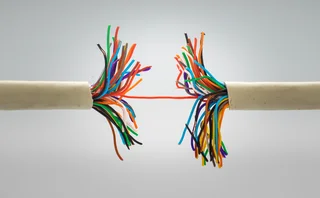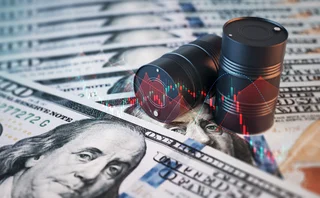How energy players are reaching the limits of hedging
Commodities firms face lasting changes in 2018

The energy hedging market is in constant flux: end-users and producers enter and leave depending on their financial limits, estimates of future market conditions and management beliefs and strategies; banks and speculative financial players swarm or recoil as price curves change shape. However, in 2018, a couple of developments in the energy business promise to produce more lasting changes.
Smart meters are finally becoming commonplace in major electricity markets. A majority of households in the US already have them, while the UK has targeted 2020 for virtually complete household coverage. Other major economies around the world have similar plans. And while it has taken US utilities a while to work out exactly what to do with the torrent of user data these meters provide, time-of-use rates are now poised to roll out in some of the largest markets in the US. The result could be less volatility, lower margins and a significant drop in the demand for power hedging.
Time-of-use rates are now poised to roll out in some of the largest markets in the US. The result could be less volatility, lower margins and a significant drop in the demand for power hedging
Much of this rests on assumptions about the degree to which consumers will alter their behaviour in response to the introduction of TOU rates – something that remains unclear, especially for the retail market. Introducing smart appliances could help here, but that assumes smart meters will operate on a single open standard that appliances could effortlessly and seamlessly use as an interface – which looks like an optimistic belief, to say the least. Hopes of behavioural change might be better founded in the commercial and industrial sectors.
Hedging is also dwindling at the long end of the oil market – in part because of backwardation, but also because of fundamental changes in the hedging market. Bank withdrawals from the commodity hedging market have left little liquidity at the far end of the curve, and an influx of speculative money at the near end is making market movements difficult to forecast. Many of the changes may reverse when the price curve changes, but the banks will not return any time soon – their regulators have made their feelings clear on the issue. This, more than any other factor, means the oil hedging business has changed significantly and permanently.
More on Risk management
CRO interview: Shawnie McBride
NRG’s chief risk officer Shawnie McBride discusses the challenges of increasingly interconnected risks, fostering a risk culture and her most useful working habits
Increasingly interconnected risks require unified risk management
Operational risk is on the rise according to a Moody's survey, making unified risk management vital, say Sapna Amlani and Stephen Golliker
Energy Risk Europe Leaders’ Network: geopolitical risk
Energy Risk’s European Leaders’ Network had its first meeting in November to discuss the risks posed to energy firms by recent geopolitical developments
Energy Risk US Leaders’ Network: tackling volatility
Energy Risk’s inaugural US Leaders’ Network convened in Houston in October to discuss risk management challenges caused by geopolitical upheaval, policy uncertainty and volatility
LNG trading strategies set to change amid major market shifts
The global LNG market is on the brink of significant changes set to alter trading dynamics and market behaviour, say analysts
Why commodity finance is ripe for stablecoin
Digital currency brings cost efficiencies to financing, but its real benefit to commodity firms lies in making huge pools of new capital available, write Jean-Marc Bonnefous and Ronan Julien
US shutdown leaves commodity traders without key data
Commodity traders are ‘flying blind’ without Commitment of Traders reports
Energy Risk at 30: Learning from the past
Energy Risk looks back at the seminal events and developments that have shaped today’s energy markets







